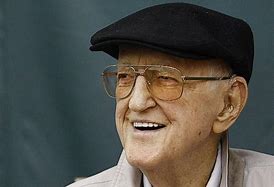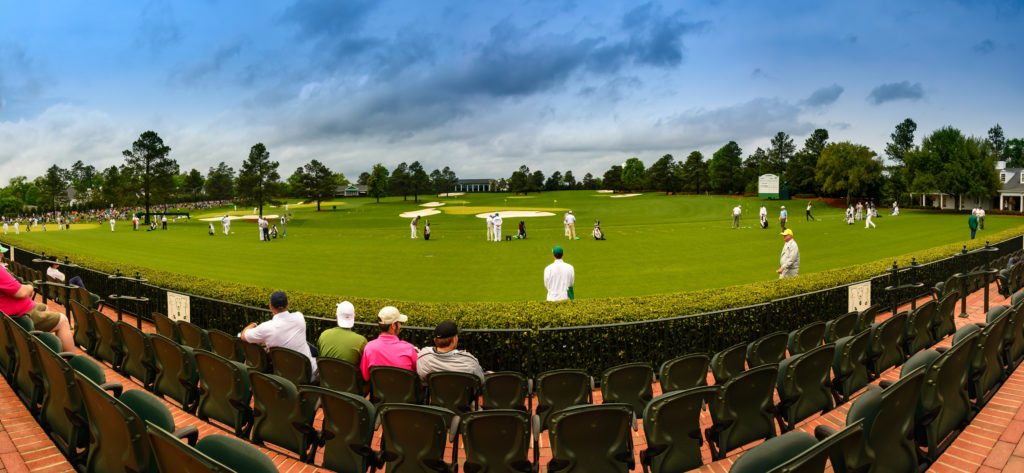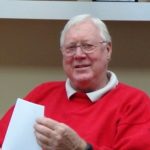Dan Jenkins, aka “His Ownself” was, like most famous people, acutely aware of his own celebrity.
The difference though, between him and other luminaries, was his amused self-assurance at being a superstar, while working and plying his trade, in a world that was filled with other superstars.
He wore his considerable fame comfortably, even while the many athletes he wrote about, blatantly flaunted their rings, trappings and oversized personalities for all to see.
And Jenkins was assuredly a star in many different disciplines. Most notably as a bestselling author, sportswriter, journalist and a movie producer in Hollywood.
Born and raised in Fort Worth, Texas, he took his oh-shucks, good-old-boy persona to the East Coast and found fame and fortune amongst the buzz and bustle of New York City, working for such publications as, Sports Illustrated, Playboy and Golf Digest.
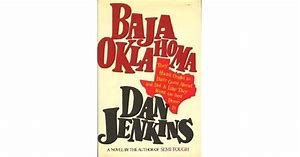
He also owned a Tex-Mex Restaurant on the Upper East Side of the City, named “Juanita’s” after a character in his best-selling book “Baja Oklahoma” proving beyond a doubt “You can take the boy out of the country, but you can’t take the country out of the boy.”
His legend grew along with his byline and until both became one and the same.
As he once repeated to me, from a line immortalized in his biography, “It’s not enough for you to know the maître d’s name, what’s important is that he knows your name.”
A lot of people knew his name.
His self-confidence stemmed, I believe, from his early success as an accomplished athlete in different sports, most notably as a basketball player and college golfer at TCU.
Ben Hogan famously offered to take him under his wing and tutor him for a career in golf. He declined the offer. Not because he didn’t think he could make it playing golf, he was already pretty good. He turned down Ben’s offer because of his steadfast conviction gleaned, from a very early age, that he would rather write about sports than play them, albeit knowing he could do both.
And Jenkins did both, at a very high level. He once finished second in the Fort Worth City Open, a feat shared with none other than Byron Nelson and Ben Hogan. And, in a long-distinguished literary career, he has won just about every writing award worth winning, including Induction into the World Golf Hall of Fame in 2012, only the third sportswriter to be so enshrined after the two Yoda’s, Bernard Darwin and Herbert Warren Wind.
I have always believed, as he went about his business of chronicling the exploits of players, actors and sports personalities with that constant twinkle in his eye, and a cigarette in his hand, that a significant part of the success he achieved, was manifested by the knowledge that he had sweated and toiled in the arena and on the playing fields.
He had experienced firsthand the vicissitudes of success and failure on a high level that transcended whatever the placid and sometimes dreary banalities regurgitated from the mouths of the lesser beings he interviewed. He understood first hand their insecurities and pain and saw beyond it.
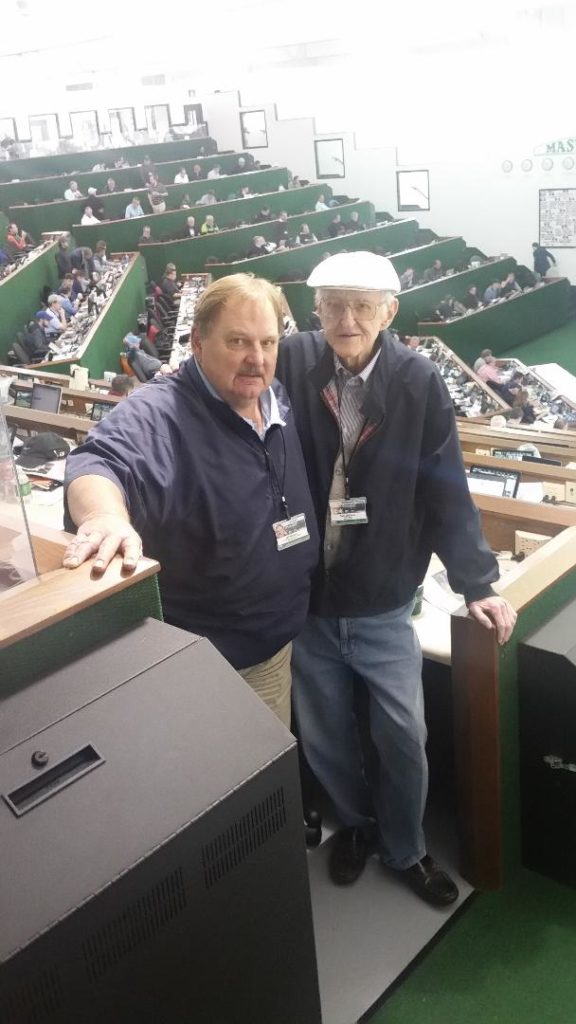
Jenkins was 90 years old when he passed on Thursday, March 7, 2019. An age well past the usual expiration date for someone with his proclivity for the jaded things in life, namely press room food, Winston Light’s, JB Scotch and late nights at melancholy hotel bars.
I was lucky, blessed and fortunate enough to share all of the above with him for over thirty years. Here are some of those memories.
Books
Growing up, I wasn’t much for television, work or girls. Books and sports pretty much occupied all my waking hours. Football, baseball, basketball, each in their season, with a little golf thrown in to fill out the gaps.
When I wasn’t playing or practicing, I was reading — something I still do.
My interests run the gamut of popular fiction, human interest stories, biographies, and history.
At an early age, I became enthralled with “New Journalism” and writers who researched their subject diligently, scripted it intensely and immersed themselves into their dialogue.
It began with Mark Twain, Earnest Hemmingway, Arthur Conan Doyle, Jack London, Joseph Conrad among others.
As my tastes evolved, I moved into the world of gonzo, Tom Wolfe, Joan Didion, Hunter Thompson and naturally, being a sports guy, Dan Jenkins. I enjoyed literature that allowed the author to enter the story with their own opinions, ideas, and personal involvement.
In Jenkins case, he used the playing fields of sport as metaphors for life’s lessons while emphasizing and characterizing the absolute absurdity of the games, the athletes who played them, the oversized privilege and excess of the participants and the humor in it all.

Semi-Tough, Dead Solid Perfect, Limo, all best sellers, all made into movies. I read them all and fell in love with his irreverence, knowledge of the esoteric, behind the scenes action and, of course, the scintillating coarseness of his dialogue.
When I became a club-pro and started making some money, I subscribed to a book club that focused on the very best of golf literature — entitled the “Classics of Golf” this 69-book collection specialized in what, objectively, was called the best, and most read, golf books in the world. The sent you a reprint of the original editions every couple of months. Included in the collection was Dan Jenkins seminal masterpiece, “The Dogged Victims of Inexorable Fate.”
I bought the entire collection and then proceeded to read them all, marveling then, as I still do, how insightful, and knowledgeable those early masters were in narrating the nuances of a game I love.
My wife of nearly fifty years is in the collectible business. Some people call it other people’s junk, but she has two retail outlets and does pretty well at it.
As she relentlessly and incessantly searches for bargains at the estate and garage sales, I dolefully tag along. While she haggles for deals on other people’s memories, I search for old golf books. I’ve found a lot of the old classics that people have never read and don’t know the value.
And whenever I go out of town on golf trips or broadcast assignments, she tags along with me and we continue our search for antiques and old books at off-the-main-street-malls, flea markets, dusty antique stores and estate sales in little towns and off-the-byway villages all over the country. It’s been a fun journey we’ve been able to share.
As my obsession has grown, I’ve narrowed my searches to first-editions of the golf classics I purchased those many years ago. And over time I have amassed a nice collection of golf memorabilia, including many of the first editions of those original classics, including every one of the 23 books Dan Jenkins has written during the ninety years he spent on this planet. I have them all.
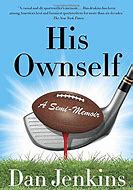
In 2014, after he wrote “His Ownself: A Semi-Memoir” I was chatting with him about the story and had the opportunity to ask: “If this was his memoir and last book, then I should interview him for the last time, and he could promote the book on the air.” He refused, saying, in an exaggerated New York accent, “I’m done talking about it, the book stands on its own.” I thought that was pretty funny and then related to him my obsession with his golf books and that I had all of his in first editions. He felt that, while flattering, was oddly peculiar. And, in passing I asked him if we ever got the chance, would he mind signing them for me. He graciously said sure.
Fast forward to the 2015 Masters. I packed up all his books into an extra suitcase and lugged them all with me to Augusta where I was covering the tournament. When I saw him on Wednesday in the Media Center, I reminded him of the promise he made to me about signing his books. He said, “Bring Them In.”
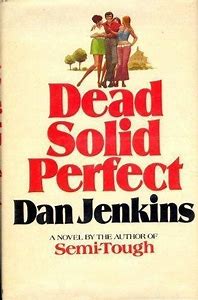
Which I did the next day and damned if he didn’t sign every one of them. And not with the usual lame, bullshit, stock inscriptions you usually get from other authors. He penned each of those collectible, first editions with a personalized message reflecting the theme of each book.
People can always say, as he often did, that nothing in life is “Dead Solid Perfect” but that was pretty close. Thanks, Dan.
Overheards
I first met Dan Jenkins in 1986 at the United States Open Championship held at Shinnecock Hills in South Hampton, New York.
I’m pretty sure he was not impressed, but he was cordial.
I, of course, knew who he was having read all his books and having long followed his by-line in Golf Digest and Sports Illustrated.
Me, I was just another guy hanging out at his table in the press tent taking up space. Someone he referred to as a “Time Bandit.”
Dan Jenkins in his long, illustrious career covering golf, was a solid fixture at the major championships.
If you were counting, the totals looked like this:
63 U.S. Opens
56 PGA’s
45 Open Championships
68 Masters.
That’s 232 Major Golf Championships not including Ryder Cups. A record, much like John Stockton’s Assist record, that will never be broken.
On the other hand, I’m attending, as an accredited journalist, my second major championship and first US Open. I had covered the 1985 PGA Championship won by Hubert Green at the Cherry Hills Country Club, outside Denver, Colorado the summer before. I was beginning to get my feet wet as a fledgling writer, so naturally, I was all over the master wordsmith trying to learn all I could about covering Major Tournaments.
And I had a lot to learn.
The 1986 Open and the 1986 Major Championship season, in general, were noteworthy for a couple of compelling reasons. Most notably, this was the year Greg Norman led every major golf championship after 54 holes and won only one of them, The Open Championship at Turnberry, Scotland.
That included the Masters two months before when Norman held the lead going into Sunday only to have Jack Nicklaus shoot a historic 65 on Sunday and win his sixth Masters and eighteenth Professional Major, both records that still stand. That was, and remains, one of the greatest sporting achievements in history.
Jack, Norman, the rest of the field and myself, all arrived at Shinnecock Hills with nervous anticipation. Shinnecock was one of the founding members of the United States Golf Association but had not hosted an Open Championship since 1896, two years after the founding of the USGA, when Drivers were made of wood, and so were the shafts.

The gallows humor in the press tent was, the Club, with its staid, conservative and very tony membership, had resisted hosting another Open Championship for almost a century, because the members did not want all those golf fans from Iowa, Wisconsin and other points West wearing their souvenir golf shirts with the distinctive Shinnecock Hills Logo on it.
Be that as it may, this was an old-style, true links, ultra-private golf course, located in the middle of Long Island that hadn’t hosted a major championship in almost 100 years. A lot of the blue blazers in the USGA were very nervous how the golf course would hold up to the onslaught of fans, media, and the modern, power golf, now being played by highly motivated professional athletes.
They shouldn’t have worried.
Everything worked out well, it was a great tournament, the golf course was magnificent, and I loved everything about New York, including the train ride into the City.
Greg Norman, as I said earlier, was the 54-hole leader, but with the raunchy and aggressive New York fans giving him grief on every hole, it got so bad he confronted a fan in the gallery, faded to a 75 on Sunday to finish twelfth. Continuing his streak of throwing away Major Championships on Sundays.
With Norman choking down the stretch, the rest of the field attacked the golf course. There were ten players that either led or were tied for the lead on Sunday afternoon, creating an atmosphere as electrifying as any I’ve ever felt before.
In the end, it was Raymond Floyd who led a charge on the back nine with birdies on 11, 13 and 16 to shoot a bogey-free 66 and win his fourth major championship and first US Open.
Jack Nicklaus, at age 46, tied for eighth, which would be his last top-ten in the United States Open Championship.
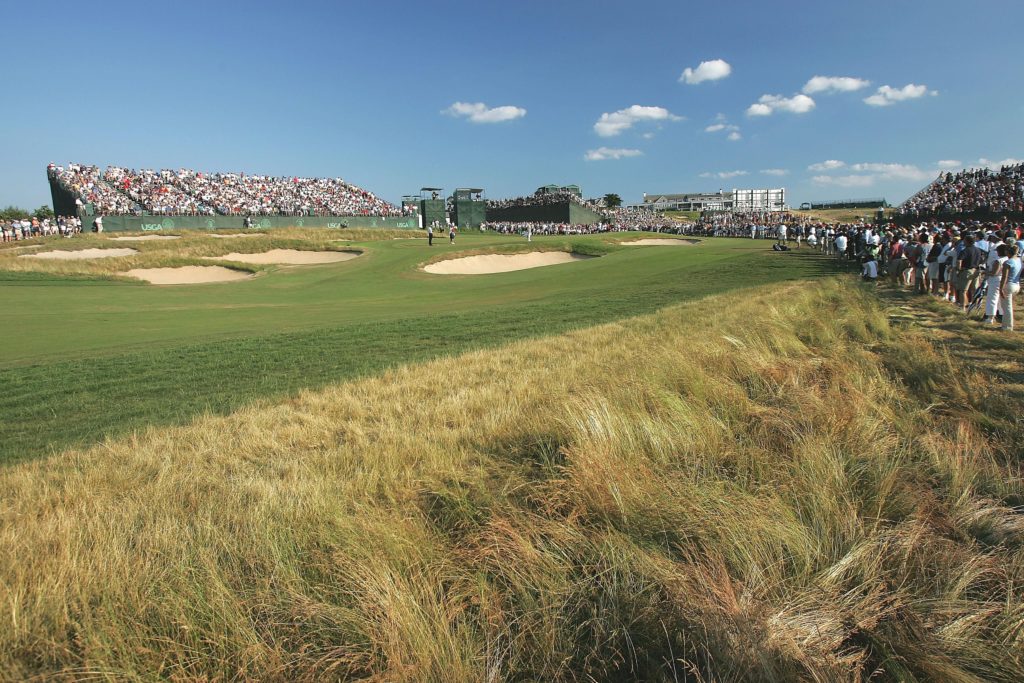
As for the golf course, Shinnecock presented such an incredible challenge and experience for all involved, that the stuffed shirts of the USGA promptly added it to their preferred rotation. The result is the course has now hosted five United States Open Championships with another scheduled in 2026. It also included entry into the National Register of Historic Places in 2000.
Pretty heady stuff for a golf course that had self-consciously avoided the national limelight for 90 years.
And what was I doing while all this was going on you ask?
Well, I was in the Press Tent, sitting next to Dan Jenkins, drinking beer, trading banter and watching it all unfold on television.
It’s no secret that trying to keep track of what’s happening, on Sundays, at a major golf championship, is a daunting task. One I had learned firsthand the year before at the PGA Championship.
It is impossible; I believe unless you are following one specific player, to keep up with all the action and lead changes while you are on the golf course. There’s just too much going on.
It’s also no secret that the best place to watch all the action of a major championship on a Sunday afternoon is in an air-conditioned press tent, with its multiple TV sets, displaying various feeds from around the course, computer print-outs with up-to-the-minute scoring and, of course, a bar with free drinks.
A not-so-secret fact that every experienced journalist already knows, including “His Ownself.”
There is a famous picture from the 1941 US Open held in Fort Worth, Texas, showing a young Dan Jenkins, shadowing the foursome of Byron Nelson, Gene Sarazen, Tommy Armour, and Lawson Little. Proof, some people say, that Jenkins has been on a golf course during tournament play.
The same criticism that followed, among others, another Hall-of-Famer, Bernard Darwin throughout his distinguished career.
I do know this; it did not take me long to figure out that, by watching and listening in the press room, you could learn more about what was happening in the tournament than out on the golf course. Sure, you walked on Monday and Tuesdays, but when the tournament started, inside was always better.
It surprises people when they ask me where I was when so and so made that putt, or that guy got up and down to save par. When I tell them, I was sitting on my butt in the press room they are flabbergasted I wasn’t out on the course following all the action. And I say “no way,” not with 100,000 screaming, running golf fans trying to trample me to death.
I’m happy to report that Jenkins, and many other writers, agreed with me. In later years Dan was quoted as saying, “I always learned more about the tournament and what is going on by listening to other writers, officials and the players themselves, that I do out on the course.” A process he called “Overheards” Taking comments he eavesdropped from other sources and working them into his story as if they were his observations. It’s a technique a lot of journalists use, but I learned it firsthand from Mr. Jenkins.
Back to Shinnecock. On the back nine, as Floyd was making his charge and after he had birdied the 16th to take the lead outright, I jumped up and bellowed, “There’s your winner.” I was a little embarrassed by my exuberance, but no one seemed to mind. And Floyd did go on to win the tournament.
Fast forward a couple of months and I was on an airplane going somewhere; I don’t remember where and it doesn’t matter.
What does matter is, I was reading the in-flight magazine, the one with the crossword puzzle always half done that’s in the pouch in front of your seat. The featured story was on Raymond Floyd winning the US Open at Shinnecock Hills by none other than Dan Jenkins.
Having been there I, of course, was interested in and, then enthralled with the story.

What a tale it was. It was as if Dan had walked every step of the way with Floyd, side-by-side with him, watching every shot, on every hole of his historic journey, up to and including the trophy presentation in the fading lights, in front of that ancient and elegant clubhouse, joining with thousands of adoring fans showering the new Champion with adulation.
It was an incredible read, more so in my knowledge, that I knew for a fact, on that summer’s day in Mid-June, Dan Jenkins never left the press room.
I know that for the simple reason I had sat next to him the entire time on that warm Sunday afternoon, with the only exception of his going to the bathroom or getting another beer.
Near the end of this incredibly realistic, first-person account, of Floyd’s magnificent triumph, was the best sportswriter on the planet, explaining how he knew Ray was going to win because after the birdie on 16 he had jumped up and called out to all who could listen, “There’s your winner.”
I slumped back in my airplane seat amazed and dumbfounded. My very first Open and I already had a Dan Jenkins “OverHeard” to my credit.
I hoped it wasn’t my last.
Football
As much as Dan Jenkins loved golf, he loved football more. Specifically, college football.
As he was fond of saying, “There are three major sports in Texas: High School Football, College Football, and Golf.”
And by college football, that meant the Texas Christian Horned Frogs, a private university he graduated from in 1953 and was intensely loyal to. TCU was also featured prominently in many of his books.
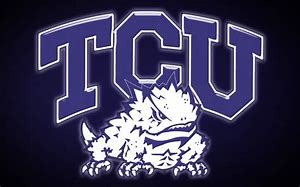
His love for the Horned Frogs and Texas Football manifested itself in many ways.
June Burrage, his wife of 59 years, was a TCU Homecoming Queen; The press box at Amon G. Carter Stadium, where the Frogs play their home games, is named after him; and The University of Texas honors outstanding writers annually in his name with, “The Dan Jenkins Medal for Excellence in Sportswriting.
Although my only interaction with Dan Jenkins over the years, was attendance at the Major Golf Championships on the PGA Tour’s annual schedule and through various Golf Writers Association of America activities, of which we were both members, our conversations, whenever we saw each other, especially in the later years, always turned to football.
The reasons were many, animated and mixed.
TCU has a long and storied history in college football. The school began playing organized football in 1896 and were crowned National Champions in 1935 and 1938. They are ranked as one of the best college football programs of all time and the 4th best private college, behind powerhouses Notre Dame, USC, and the Miami Hurricanes. The Frogs also produced the 1938 Heisman Trophy winner when Quarterback Davey O’Brien passed them to an undefeated season.
They were long-time members of the Southwest Conference along with their natural and regional rivals, Southern Methodist (SMU), Rice, Texas Tech, Houston, Baylor, Texas A&M, Arkansas, and Texas. The Conference also controlled the Cotton Bowl, one of the premier college bowl games, which annually pitted the Southwest Conference Champion against another highly ranked team, usually from the Big 8 or SEC, often competing for the National Championship.
A record that was big-time stuff, on a national stage, during the glory years of college football and Dan Jenkins covered it all. More than one sportswriter has declared, “Dan Jenkins helped turn college football into a national pastime.”
But then it turned bad.

By the mid-1980s, just about the time I first met Dan, TCU, along with several other SWC teams, were charged with violating NCAA rules governing recruitment and payments to players. In 1986 TCU received three years’ probation from the NCAA and banned from post-season play. Along with the suspension was a reduction in athletic scholarships to 25 during the 1987 and 1988 seasons. The Horned Frogs football fortunes declined rapidly, and the team would need another ten years to recover from NCAA sanctions and return to consistent winning seasons.
And then things got worse.
Amidst all these scandals, the Southwest Conference officially disbanded in 1995, with its teams scattering like a cotton seed to the wind, landing anywhere they could find a place to play.
TCU ended up in the Western Athletic Conference where, hold the drum rolls please, they now competed against the likes of Wyoming, San Diego State, Air Force, Hawaii, New Mexico, Fresno State and, of course, Utah and BYU, where they toiled in mid-major obscurity for the next 17 years.
Things improved slightly when the Utes and Cougars bolted the WAC for the Mountain West Conference in 1999 and TCU followed in 2005, enhancing their visibility and post-season opportunities.
But the fact remained, a once proud program, who had competed annually for national championships and major bowl games, now traveled to play in such far-flung locales as the high plains of Laramie, the mountains of Salt Lake City and the sterile sanctity of Provo, Utah to play football in the snow.
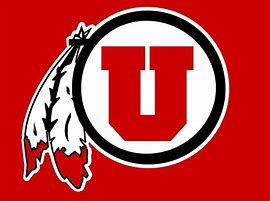
Dan Jenkins took it personally.
And with me being the only member of the media from Utah, or the Mountain West for that matter, who also attended the Major Championships regularly, he let me know his feelings about his beloved Horned Frogs playing “The Mormons.”
It didn’t help matters that, both BYU and Utah, kicked TCU’s butt during those early years they spent in football purgatory. The combined totals of Utah and BYU versus TCU between 1996 and 2007, was eight wins against two losses. Not a lot of bragging rights for His Ownself when we caught up with each other in Augusta every spring.
Dan finally got some pride back starting in 2008 when TCU, under Coach Gary Patterson, regained their winning ways and won four straight against BYU through 2011 before BYU left the MAC to become an Independent.
TCU also defeated the Utes in 2010 and 2011 before Utah moved to the PAC-12.
The final redemption came in 2012, when Dan’s reborn Horned Frogs left their exile as a mid-major program and re-joined a Power Five Conference, reuniting with many of their former in-state rivals, competing in the Big-12.
They were once again playing big-time football, contending for the College Football Playoffs, the National Championship, and back home in Texas where they belonged.
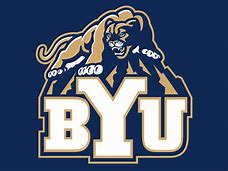
BYU was never mentioned again.
Parking Spots
Tim Rosaforte, an On-Camera Analyst for the Golf Channel and an award-winning sportswriter for many different publications, was kindly autographing his anthology of selected stories for me, on the evening of his being awarded the 2014 PGA Lifetime Achievement Award in Journalism. A significant and very prestigious accomplishment, given annually during Masters week.
Before he signed, he looked up and asked me “how many Masters I had attended?” I was surprised at the question, but immediately answered “twenty-two,” which at that time was the correct number.
His inscription read: “To Jeff, only 18 more Masters before you get your parking spot.”
The irony was not lost on me. Twenty-two Masters is a sizable number, putting me in some glorified company, but nowhere near the upper echelon of journalists who make the annual pilgrimage to Augusta each spring for the Masters Tournament. For them, it’s more than a rite of passage; it’s a crusade.
Writers that have attended forty or more tournaments, receive, among other honors, their personalized parking spot, with a large sign embossed with their name on it, situated prominently on the front row of the Media parking lot. It’s a rare privilege that does not go unappreciated.
Dan Jenkins leads that distinguished group of journalists with 68 appearances, attending his inaugural Masters in 1951, watching Ben Hogan win the first of his two Masters titles.

Augusta National’s lavish treatment of the media dates back to its founder, Bobby Jones who appreciated writers and their craft. In his autobiography, he penned the following tribute: “What measure of fame I have enjoyed has been due in large part to O.B. Keeler and his gifted typewriter.”
The Masters has always set the standard by which the world’s press corps are treated.
Augusta National, the course Jones built, is one of the most exclusive private golf clubs in the world and is also one of the most guarded. It is and has always been, cautious about protecting their image and sizable brand.
Based on that philosophy, blessed with ideal growing conditions and an unlimited budget, the club has continuously upgraded and improved their property and infrastructure to accommodate the sporting world’s spotlight which shines brightly on Augusta every April during Masters week.
One of the many delights, regular patrons of the tournament look forward to each spring, is trying to identify the many and sometimes subtle changes made during the Club’s offseason, which runs from the first of May until the course re-opens for play in October. It’s been said that “Augusta National has gone through more changes since its inception than any of the world’s twenty or so greatest courses.”
Nowhere was that more evident than in 2010 when the club produced, seemingly out of thin air, what has been called: “One of the best practice ranges that I’ve ever seen,” by none other than two-time Masters Champion Bernard Langer.
To the astonishment of all, including players, media and longtime visitors, this impressive practice facility was no more than a dusty, graveled 70-acre parking lot six months before. The end results were startling. It is genuinely “State of the Art.”
Parking has always been free at the Masters, another Bobby Jones perk. But with the increased popularity of the tournament and the number of spectators now allowed on the grounds, there was undoubtedly a need for both a new driving range and additional spectator parking.
Media Outlets reported Augusta National purchased approximately 100 acres of land across Berkman’s Road for the additional parking, complete with landscaped vistas, lighting and winding thoroughfares, which freed up the old parking lot for the new practice facility.
The new range is beyond impressive, as was the new media lot, conveniently located directly across the street from the main entrance, complete with the front row, preferred parking for the 40-year club which had, over the decades, more than earned their coveted and reserved spaces.
Except for one glaring omission, Dan Jenkins name was missing from the assembled lineup of distinguished scribes.
It was a notable oversight and one I, and others, thought needed an explanation.
It came soon enough.
Upon entering the grounds of Augusta National, media members are chaperoned through their security checkpoint and then shuttled to the Media Center on a private road, bypassing the usual hustle and bustle of the massive crowds that surround the main entrance.
They continue on a secluded path that enters a different domain, set against a backdrop of privilege most visitors never see. A magic world of corporate hospitality suites, private dining, and indulgence that are reserved for a select few. All protected by security guards, masked by hedgerows, and shielded from curious eyes.
At the termination of this grand and impressive boulevard, with all its attendant splendor, resides the Press Building, defended by two parking spots, side-by-side, noticeable for their authority and proximity to the building.
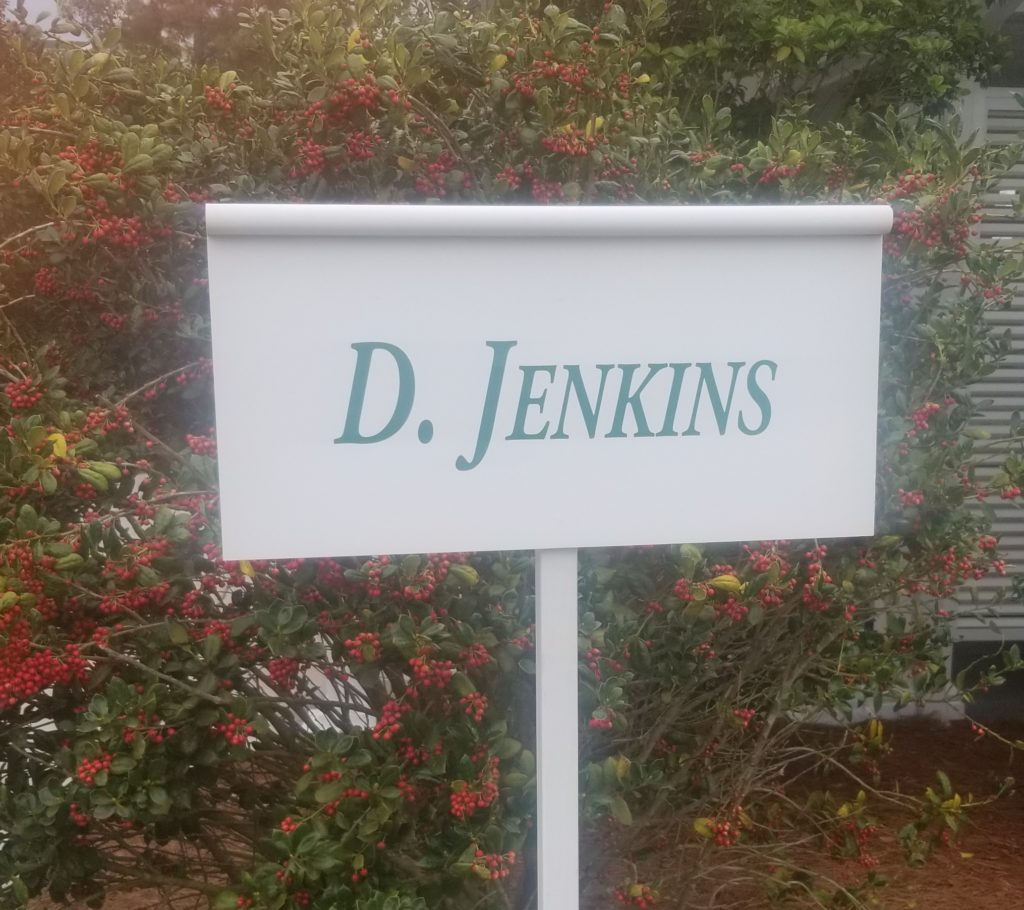
The signage guarding these spots was modest but conspicuously displayed.
One read, Reserved for the Chairman
The other just said, D. Jenkins
A simple, but elegant, tribute to a man who, more than any other living journalist, understood and revealed, the magnificence of the Grand Theater the Masters had become.
Alas, those parking spots have disappeared, as has the Press Building. Replaced by a newer, grander and more imposing Media Center that now occupies its own corner of the new Practice Facility. Complete with a private parking lot replete with reserved spots for its tenured journalists.
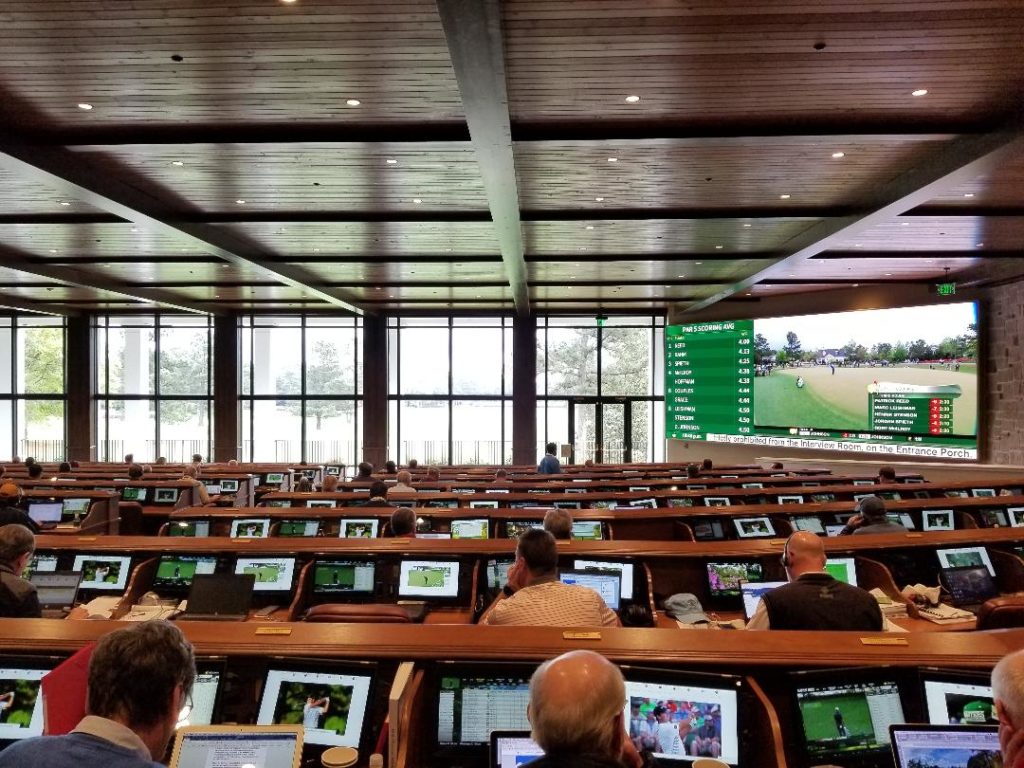
An ongoing testament to progress as the National continues their relentless pursuit of excellence by providing participants an impossible standard that, realistically, cannot be duplicated.
Sadly, there is no longer a reserved spot for Dan Jenkins. Someone and something Augusta National cannot replace or redo, no matter how much time or money they expend.
Jenkins made the Masters relevant by his insightful commentary and total honesty reporting the exploits of the extraordinary athletes who annually competed in the tournament.
And he earned his many honors by inventing, defining and crafting a genre of Sportswriting that has influenced entire generations of pundits, who try valiantly to emulate his massive talent, irreverent humor and insightful dialogue, myself included.
It will now remain for history to record if a new generation of sportswriters can replicate his considerable presence and earn, in time, their own coveted spots in the parking lots of the world.
Jeff Waters is a PGA Master Professional and a member of the Golf Writers Association of America


